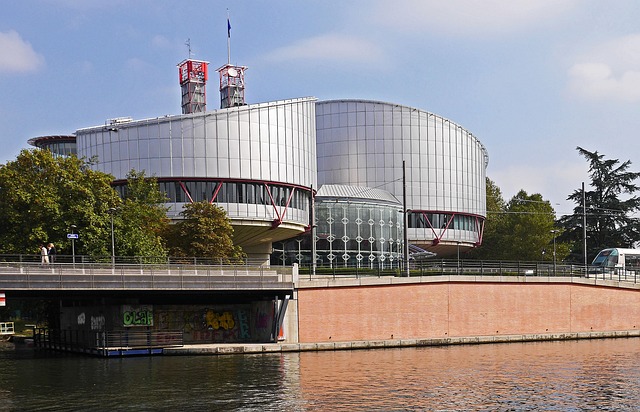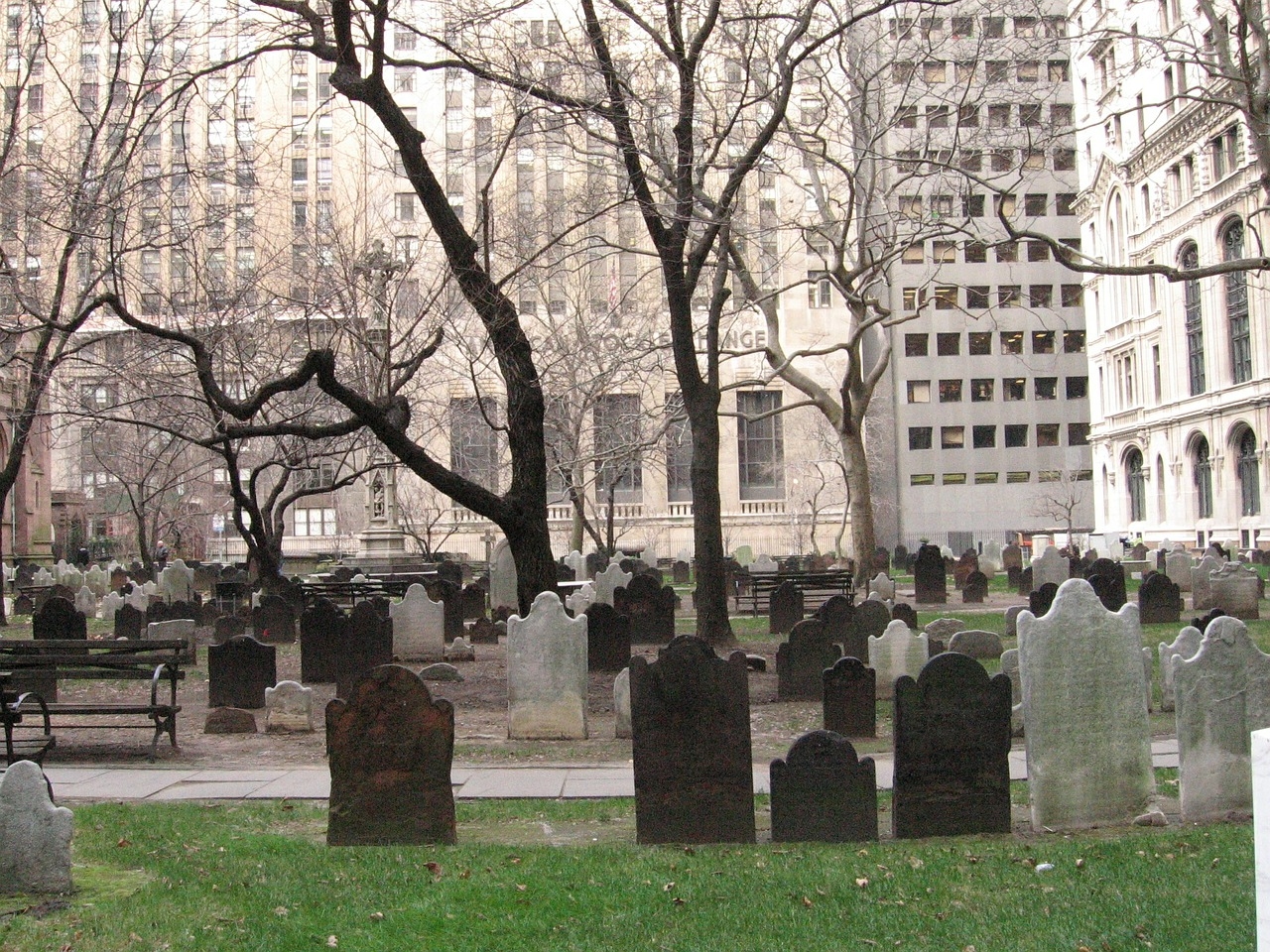3
0
3922
Фабула судового акта: Громадянка України Ю.В. Тонюк звернулася до ЄСПЛ зі скаргою на порушення ст.ст. 6, 8, 13 Конвенції у зв`язку з облаштуванням неподалік від її помешкання цвинтаря.
Уповноваженими органами було виділено ділянку землі поруч з будинком Заявниці для будівництва нового цвинтаря. Після створення цвинтаря виявилося, що будинок Заявниці та прилеглі ділянки знаходилися на відстані менш як 10 метрів від цвинтаря. Заявниця стверджувала, що нормальний плин життя її родини порушено постійним проведенням поховальних церемоній біля помешкання, неприємним запахом розколадання, а також неможливістю користуватися водою з колодяза без небезпеки для свого здоров`я.
Заявниця неодноразово зверталася зі скаргами до різноманітних органів, посилаючись на законодавчі положення щодо дотримання сантірних вимог, згідно яких відстань між помешканням та цвинтарем мала становити щонайменше 300 метрів.
Згодом поховання на новому цвинтарі було заборонено сантірним лікарем та місцевими органами влади. Заявниця отримала дозвіл на поховання свого сина на старому цвинтарі в обмін на обіцянку не оскаржувати облаштування нового цвинтаря біля її помешкання. У подальшому рішення про заборону поховань на новому цвинтарі було скасовано.
Заявниця звернулася до суду щодо незаконності облаштування цвинтаря поблизу її помешкання, яке порушувало чинне законодавство та піддавало життя і здоров`я Заявниці небезпеці, а також завдало їй моральних страждань. Суд визнав будівництво цвинтаря таким, що здійснене з порушенням санітарних вимог, і заборонив подальші поховання на ньому. Було відкрито виконавче провадження, проте реальних кроків для того, щоб запобігти похованням, здійснено не було, тому провадження зрештою було закінчено. Місцеві органи повідомили Заявницю, що не змогли перенести цвинтар з огляду на відсутність іншої підходящої ділянки, проте продовжують пошуки.
Заявниця просила місцеву владу переселити її з родиною у інший будинок, який придбати на заміну тодішнього помешкання. Місцеві органи повідомили, що придбання будинку неможливе через брак коштів. Через 6 років поховання на новому цвинтарі припинилися.
ЄСПЛ наголосив, що виконання остаточного судового рішення розглядається як невід'ємна частина «судового розгляду» за змістом статті 6 Конвенції. Проте, у справі Заявниці не було прийнято ефективних рішень щодо запобігання використанню цвинтаря для майбутніх поховань – таким чином, з огляду на невиконання судового рішення, було порушено статтю 6 Конвенції.
ЄСПЛ дійшов висновку, що немає підстав окремо розглядати скаргу Заявниці за статтею 8 Конвенції.
Один із суддів висловив окрему думку у справі, вважаючи, що було порушено статті 8 Конвенції з огляду на вплив на фізичне та психологічне здоров`я Заявниці близькості цвинтаря до її помешкання.
Аналізуйте судовий акт: «Деркач та Палек проти України» (Derkach and Palek v. Ukraine), заяви № 34297/02 та № 39574/02
«Ганенко проти України» (Ganenko v. Ukraine (dec.), заява № 27184/03
«Іван Панченко проти України» (Ivan Panchenko v. Ukraine), заява № 10911/05
«Дземюк проти України» (Dzemyuk v. Ukraine), заява № 42488/02
«Центр правових ресурсів від імені Валентина Кампеану проти Румунії» [ВП] (Centre for Legal Resources on behalf of Valentin Câmpeanu v. Romania [GC]), заява № 47848/08

FIFTH SECTION
CASE OF TONYUK v. UKRAINE
(Application no. 6948/07)
JUDGMENT
STRASBOURG
1 June 2017
FINAL
01/09/2017
This judgment has become final under Article 44 § 2 of the Convention. It may be subject to editorial revision.
In the case of Tonyuk v. Ukraine,
The European Court of Human Rights (Fifth Section), sitting as a Chamber composed of:
Angelika Nußberger, President,
Ganna Yudkivska,
André Potocki,
Faris Vehabović,
Síofra O’Leary,
Carlo Ranzoni,
Mārtiņš Mits, judges,
and Milan Blaško, Deputy Section Registrar,
Having deliberated in private on 25 April 2017,
Delivers the following judgment, which was adopted on that date:
PROCEDURE
1. The case originated in an application (no. 6948/07) against Ukraine lodged with the Court under Article 34 of the Convention for the Protection of Human Rights and Fundamental Freedoms (“the Convention”) by a Ukrainian national, Ms Yustyna Vasylivna Tonyuk (“the applicant”), on 25 January 2007.
2. The Ukrainian Government (“the Government”) were represented by their Agents, most recently by Mr I. Lishchyna of the Ministry of Justice.
3. The applicant complained under Articles 6, 8 and 13 of the Convention of the construction of a cemetery near her home in breach of applicable sanitary requirements, and of the authorities’ failure to enforce judgments prohibiting burials on that cemetery.
4. On 31 August 2010 the application was communicated to the Government.
THE FACTS
I. THE CIRCUMSTANCES OF THE CASE
5. The applicant was born in 1941 and lives in the small village of Yamna, which forms part of Yaremche, a resort town located in the Carpathian Mountains in the Ivano-Frankivsk Region of Ukraine.
6. On 16 July 1996 the Executive Committee of Yaremche Town Council (“the Executive Committee”) allotted a plot of land next to the applicant’s house to St John’s Church to build a new cemetery (“the new cemetery”).
7. As is evident from the photographs submitted by the applicant, as of the date when they were taken (which is not specified) her land was adjacent to the cemetery. The house where she and her family lived was located some ten metres from the cemetery boundary. The applicant’s yard was separated from the cemetery by a wire mesh fence. The nearest row of graves was about a metre from the fence (some eleven metres from the house) and was clearly visible from the applicant’s yard. The part of the cemetery captured on the pictures contained over fifty graves, some freshly decorated with wreaths.
8. According to the applicant’s statements, at the time, when she lodged the present application, her family was routinely disturbed in its daily life by the sight of funeral processions and the sound of people mourning by the graves. In hot weather unpleasant smells sometimes emanated from the cemetery. In addition, the well from which the applicant’s family drew water for drinking and other household needs was situated some twenty-five metres from the cemetery and they were worried it could become contaminated with the by-products of human decomposition.
9. The applicant contacted various authorities on numerous occasions, complaining that the distance between her house and the new cemetery was less than the 300 metres required by law as a sanitary “health protection” zone.
10. On 14 September 2000 Yaremche’s Sanitary Officer banned burials in the new cemetery as its location was in breach of applicable sanitary standards.
11. On 30 August 2001 the Executive Committee took a further decision proscribing burials in the new cemetery.
12. On an unspecified date in 2001 the applicant received authorisation from the municipality to bury her son in the old cemetery in Yamna (“the old cemetery”) in exchange for a promise not to contest the location of the new cemetery.
13. On 25 June 2002 the Executive Committee overturned its previous decision of 30 August 2001 (see paragraph 13 above) in response to complaints from St John’s congregation members and village residents that no other suitable burial ground was available.
14. On an unspecified date in 2002 the applicant instituted court proceedings seeking the revocation of the Executive Committee’s decision of 25 June 2002 and the prohibition of burials. She noted, in particular, that the distance between her house and the cemetery was less than twenty-five metres. That was in breach of applicable sanitary rules, which were justified by the fact that toxins from decomposing corpses could seep into the ground water and contaminate an area around the cemetery as large as 300 metres. Locating the cemetery so close to the applicant’s home had put her life and health at risk. The applicant also claimed non-pecuniary damages for her sufferings.
15. On 16 January 2003 the Yaremche Court found the decision of 25 June 2002 unlawful as the applicant’s house had been located within the sanitary health protection zone, which had been illegal. It ordered the Executive Committee to proscribe the burials. The judgment was not appealed against and became final.
16. On 3 March 2003 the Yaremche Bailiffs’ Service initiated enforcement proceedings, however, no steps preventing the burials were taken.
17. On 23 June 2003 the acting chief sanitary officer of the Ivano‑Frankivsk Region sent a letter to the mayor of Yaremche, demanding that he take urgent measures to bring the new cemetery in Yamna into conformity with the applicable law. He noted, in particular, that the 300‑metre sanitary health protection zone had been established to prevent water and soil pollution and the spread of infectious diseases. Allowing burials ten metres from the applicant’s house was not in conformity with sanitary rules.
18. On 24 July 2003 the Yaremche Court found that the Bailiffs’ Service had failed to act to enforce the judgment of 16 January 2003, but dismissed the applicant’s claim for non-pecuniary damages arising from the bailiffs’ inaction.
19. On 26 August 2003 the enforcement proceedings concerning the judgment of 16 January 2003 were terminated on the grounds that enforcement was impossible because the Executive Committee members refused to vote to proscribe the burials.
20. In the meantime, on 14 August 2003 the applicant instituted further proceedings against the Yaremche Council, seeking to compel it to stop burials and to pay her non-pecuniary damages for her suffering.
21. On 18 March 2004 the Yaremche Court found for the applicant in part. It noted that the Yaremche Council had failed to take all the necessary steps to prevent unlawful burials on the disputed land and ordered it to take the requisite measures. At the same time, the applicant’s claim for damages was rejected. The decision became final and enforcement proceedings were instituted.
22. At many of its meetings the Executive Committee discussed draft decisions banning burials, however, they were never approved by a vote as no suitable alternative location for the cemetery could be found.
23. On several occasions the Bailiffs’ Service imposed fines on the Yaremche Council for failure to comply with the judgments.
24. On 28 February 2005 the enforcement proceedings were terminated because of the impossibility of enforcement as members of the Council refused to vote against the burials.
25. On 26 July 2005 the Yaremche Council informed the applicant that it had been unable to relocate the cemetery in view of the unavailability of other suitable land. It was further noted that they were continuing to look for alternatives and, in particular, were negotiating to acquire a plot from the Yamna forestry authority.
26. On 9 August 2005 the applicant requested that the mayor of Yaremche consider resettling her family and proposed that the Town Council acquire another house for her. She suggested a specific house that was for sale at the material time, which, according to her, was comparable to her present house.
27. On 15 September 2005 the Executive Committee informed the applicant that the municipal authorities were ready to consider the applicant’s resettlement as an option. However, the town had no funds in its budget to buy the proposed house at that time.
28. On 9 August 2006 the Ivano-Frankivsk Regional Bailiffs’ Service refused to re-institute the enforcement proceedings in view of the impossibility of enforcement.
29. According to the Government, the municipality has not authorised any burials in the new cemetery since 2011 owing to the applicant’s continued protests and the old cemetery has been used instead.
II. RELEVANT DOMESTIC LAW
A. Law of Ukraine “On Drinking Water and the Drinking Water Supply” of 10 January 2002
30. The Drinking Water and Water Supply Act of 10 January 2002 (see relevant extracts from the Act below) established framework regulations for sanitary and hygiene standards of drinking water and water supply. In particular, Sections 27–30 of that Act established standards for drinking water, obligatory for compliance by the State authorities. These standards, according to Section 28 of the Act had to be established by the Cabinet of Ministers and had to be monitored by the Chief Sanitary Doctor of Ukraine, administering the State Sanitary and Epidemic Service of Ukraine. The relevant extracts from the Act provided as follows:
Article 36. Limitations on economic and other activities within health protection zones
“...
It is prohibited to place, construct, operate or reconstruct enterprises, installations and other objects for which full compliance with the requirements of the health protection zones [applicable to] projects, building and reconstruction and other projects cannot be guaranteed.
...
Within the second belt of the health protection zone:
it is prohibited to place a cemetery...or other object that [may] create a threat of microbial contamination of water ...”
B. The National Environmental Health Regulations establishing “Environmental Health Requirements Concerning the Construction and Maintenance of Cemeteries in Residential Areas of Ukraine” of 1 July 1999
31. The relevant extracts from the document provided as follows:
1. General Provisions
“...
1.2. The National Environmental Health Regulations are statutory and binding on public officials and citizens. ...”
3. Environmental Health Rules as to the Construction of Cemeteries
“3.5. ... [A] health protection zone between a cemetery for traditional burials or a crematorium and residential or public buildings, recreational areas and allotments shall not be less than 300 metres wide. ...
[The following] cannot be located within a health protection zone:
- residential houses with a household plot, dormitories, hotels, guest houses. ...”
32. Other relevant domestic law provisions have been cited in the Court’s judgment in the case of Dzemyuk v. Ukraine (no. 42488/02, §§ 66‑72, 4 September 2014).
THE LAW
I. ALLEGED VIOLATION OF ARTICLE 6 OF THE CONVENTION
33. The applicant complained that the failure of the domestic authorities to comply with the final judgments prohibiting burials on land adjacent to her house had amounted to a breach of Articles 6 and 13 of the Convention. The Court, which is master of the characterisation to be given in law to the facts of a case, considers that this part of the application falls to be examined under Article 6 § 1 of the Convention only (see Derkach and Palek v. Ukraine, nos. 34297/02 and 39574/02, §§ 40-42, 21 December 2004). This provision, in so far as relevant, reads as follows:
“In the determination of his civil rights and obligations ... everyone is entitled to a fair ... hearing within a reasonable time... by [a] ... tribunal ...”
A. Admissibility
34. The Government did not file any objections to the admissibility of this complaint.
35. The Court notes that the complaint is not manifestly ill-founded within the meaning of Article 35 § 3 (a) of the Convention. It further notes that it is not inadmissible on any other grounds. It must therefore be declared admissible.
B. Merits
36. The applicant argued that the authorities had intentionally ignored the court judgments in her favour.
37. The Government disagreed. They noted that the applicant’s right to the enforcement of the judgments at issue was not in dispute and that the bailiffs’ service had made great efforts to have them enforced. However, the local authorities had been faced with a very difficult policy situation, which explained the delay in enforcement. The mountainous local landscape did not leave many options for constructing a cemetery that was accessible and which complied with sanitary requirements. The municipality had discussed various options and in 2005 talks had taken place with the Yaremche forestry company on allocating land for a new cemetery. However, no suitable option had been found. The old village cemetery had become overcrowded by 1997 and the need for a new cemetery had been extremely urgent. As the applicant had been the only person to complain about the location of the new cemetery, the municipality had needed to strike a fair balance between her individual interests and the needs of the community. Moreover, in 2001 the applicant’s son had died and she had obtained permission to bury him in the old cemetery in exchange for a promise not to dispute the location of the new cemetery, but she had not kept that promise. In any event, according to the information received from the Yaremche municipal authorities, no new burials had de facto been authorised at the disputed cemetery since the beginning of 2011 because of the applicant’s protests and had again taken place at the old cemetery.
38. The Court reiterates at the outset that according to its extensive case-law, the execution of a final judgment given by a court is regarded as an integral part of the “trial” for the purposes of Article 6 (see, among many other authorities, Hornsby v. Greece, 19 March 1997, § 40, Reports of Judgments and Decisions 1997-II) and that a prolonged failure by the domestic authorities to enforce a judgment given against them constitutes, as a general rule, a breach of this provision (see, among many other authorities, Yuriy Nikolayevich Ivanov v. Ukraine, no. 40450/04, §§ 53-54, 15 October 2009). At the same time, the Court is mindful of the fact that the enforcement of judgments which incorporate rulings of a non-pecuniary nature may sometimes take more time than is the case for the payment of money awarded under a court judgment (see, for example, Ganenko v. Ukraine (dec.), no. 27184/03, and Ivan Panchenko v. Ukraine, no. 10911/05, § 58, 10 December 2009).
39. It is apparent from the case file that formal enforcement proceedings concerning the judgments of 16 January 2003 and 18 March 2004 ordering the Yaremche Executive Committee and the Council to take measures with a view to preventing burials at the new cemetery were terminated in August 2003 and February 2005 respectively without the judgments having been enforced. The bailiffs’ service referred in that regard to the fact that elected officials had refused to vote to proscribe the burials. In 2006 the bailiffs’ service rejected the applicant’s request to re-institute the enforcement proceedings, alleging that enforcement of the judgments at issue was not possible.
40. In so far as the Government submitted that, in fact, by the beginning of 2011 the problem had been resolved as no burials in the new cemetery had been authorised since that time, the Court notes that by then the periods of non-enforcement in issue had already lasted eight and seven years respectively, which is a significant length of time. Furthermore, the Court finds that the Government’s submissions, which are not supported by any documentary evidence, are inconclusive. It appears from the available material that no formal policy decision has been made to prevent the use of the cemetery at issue for future burials. The Court is mindful of the fact that enforcement of the judgments in the present case necessitated putting in place a complex policy solution, which may take time. However, it has not been provided with evidence that in the present case the municipality has taken all the steps that could be reasonably expected of it to address the problem in a comprehensive and consistent manner with a view to finding an optimal and prompt solution (see, notably, paragraphs 19, 21, 22-24 and 28‑29 above).
41. The Court therefore concludes that there has been a violation of Article 6 of the Convention on account of the non-enforcement of the judgments of 16 January 2003 and 18 March 2004 in the applicant’s favour.
II. ALLEGED VIOLATION OF ARTICLE 8 OF THE CONVENTION
42. The applicant also complained that the use of the land next to her house for burials had breached her rights guaranteed by Article 8 of the Convention, in particular, on account of an elevated risk that her well water would be poisoned and in view that living in the immediate proximity of a functioning cemetery caused her serious psychological discomfort.
43. The Government alleged that the applicant had not exhausted domestic remedies in respect of her complaint and that it was in any event incompatible ratione personae with the provisions of the Convention. Notably, the applicant had not shown that she had actually suffered any health or other damage in connection with the facts complained of and her submissions about health risk were speculative.
44. The Court notes that in its judgment in the case of Dzemyuk v. Ukraine (cited above) it has found that locating a cemetery some thirty‑eight metres from the applicant’s house in that case constituted interference with the applicant’s rights under Article 8 of the Convention. In that regard, the Court noted, in particular, that the applicant’s well water had contained high levels of E.coli bacteria, which were a health risk, and that according to the case-file material the increased level of those bacteria could be connected to the cemetery (ibid., § 83). In the present case, in contrast to Dzemyuk, no measurements of the quality of the applicant’s well water were taken and no empirical evidence of any health or other damage has been presented.
45. Having regard to the particular circumstances of the present case and in the light of the information before it, the Court considers that the main legal question in the present application concerned impossibility for the applicant to obtain enforcement of the judgments of 16 January 2003 and 18 March 2004 ordering the municipal authority to have the cemetery closed. Having examined this question under Article 6 § 1 of the Convention, the Court considers that there is no need to give a separate ruling in respect of the applicant’s complaint under Article 8 of the Convention (see Centre for Legal Resources on behalf of Valentin Câmpeanu v. Romania [GC], no. 47848/08, § 156, ECHR 2014, with further references).
III. APPLICATION OF ARTICLE 41 OF THE CONVENTION
46. Article 41 of the Convention provides:
“If the Court finds that there has been a violation of the Convention or the Protocols thereto, and if the internal law of the High Contracting Party concerned allows only partial reparation to be made, the Court shall, if necessary, afford just satisfaction to the injured party.”
A. Damage
47. The applicant claimed 1,000,000 Ukrainian hryvnias in respect of non-pecuniary damage.
48. The Government contested the claim as exorbitant.
49. The Court recalls that it has found a violation of Article 6 of the Convention on account of the failure of the municipal authority to comply with the court judgments ordering it to close the cemetery located on land adjacent to the applicant’s. The Court notes that this non-compliance amounted to a breach of applicable sanitary and public health regulations and considers that the applicant must have experienced considerable anguish and distress as a result of the violation it has found. Making its assessment on an equitable basis, as required by Article 41 of the Convention, the Court awards the applicant 6,000 euros (EUR) in respect of non-pecuniary damage.
B. Costs and expenses
50. The applicant did not submit any claim for costs and expenses. Accordingly, the Court makes no award under this head.
C. Default interest
51. The Court considers it appropriate that the default interest rate should be based on the marginal lending rate of the European Central Bank, to which should be added three percentage points.
FOR THESE REASONS, THE COURT
1. Declares unanimously the complaint concerning non-enforcement of the court judgments given in the applicant’s favour admissible;
2. Holds unanimously that there has been a violation of Article 6 of the Convention;
3. Holds by six votes to one that there is no need to examine the complaint raised under Article 8 of the Convention;
4. Holds by four votes to three
(a) that the respondent State is to pay the applicant, within three months of the date on which the judgment becomes final in accordance with Article 44 § 2 of the Convention, EUR 6,000 (six thousand euros), plus any tax that may be chargeable, in respect of non-pecuniary damage, to be converted into the currency of the respondent State at the rate applicable at the date of settlement;
(b) that from the expiry of the above-mentioned three months until settlement simple interest shall be payable on the above amount at a rate equal to the marginal lending rate of the European Central Bank during the default period plus three percentage points;
5. Dismisses unanimously the remainder of the applicant’s claim for just satisfaction.
Done in English, and notified in writing on 1 June 2017, pursuant to Rule 77 §§ 2 and 3 of the Rules of Court.
Milan Blaško Angelika Nußberger
Deputy Registrar President
In accordance with Article 45 § 2 of the Convention and Rule 74 § 2 of the Rules of Court, the partly dissenting opinion of Judge Vehabović is annexed to this judgment.
A.N.
M.B.
PARTLY DISSENTING OPINION OF JUDGE VEHABOVIĆ
I am in agreement with the judgment of the Court except as to the finding that there has been no violation of Article 8 of the Convention.
The applicant complained that the (illegal) use of the land next to her house for burials had breached her rights guaranteed by Article 8 of the Convention, in particular on account of an elevated risk that her well water would be poisoned and because living in the immediate proximity of a functioning cemetery caused her serious psychological discomfort.
I consider that living in the immediate vicinity of the cemetery had greatly affected her ability to enjoy the amenities of her home and to lead a satisfactory private and family life. There was a real risk of contamination of the water, which caused her and her family anxiety on a daily basis. In hot weather unpleasant odours emanated from decomposing corpses. It was also emotionally difficult to live so close to the cemetery. Seeing frequent funeral processions and hearing people crying near the graves of their loved ones had had a profound impact on her mental state and that of the other members of her household, and had negatively affected their ability to relax in their yard or go about their daily business. Some of these elements are clearly subjective ones, but there are also a number of objective elements involved in this case. As the applicant’s yard was the only one adjacent to the cemetery, she and the other members of her family were the only ones who had suffered the adverse consequences to such a degree. There were no houses on the other three sides of the cemetery, only a river, a stream and a railway line.
In a number of cases, the Court has reiterated that Article 8 of the Convention protects the individual’s right to respect for his private and family life, his home and his correspondence (see, among other authorities, Zammit Maempel v. Malta, no. 24202/10, § 36, 22 November 2011). The Court has stated on numerous occasions that the concept of “private life” is a broad term not susceptible to exhaustive definition. It covers, inter alia, the physical and psychological integrity of a person (see, among other authorities, Pretty v. the United Kingdom, no.2346/02, § 61, ECHR 2002‑III, and Otgon v. the Republic of Moldova, no. 22743/07, § 15, 25 October 2016). It also secures to the individual a sphere within which he or she can freely pursue the development and fulfilment of his or her personality (see, in particular, Smirnova v. Russia, nos. 46133/99 and 48183/99, § 95, ECHR 2003-IX (extracts)).
The concept of “home” as interpreted by the Court is the place, the physically defined area, where private and family life develops. Breaches of the right to respect for one’s home include those that are diffuse, such as noise, emissions, smells or other similar forms of interference. A serious interference may result in the breach of a person’s right to respect for his home if it prevents him from enjoying the amenities of his home (see, in particular, Moreno Gómez v. Spain, no. 4143/02, § 53, ECHR 2004-X, and Zammit Maempel, cited above, § 36).
In a number of cases the Court has found Article 8 of the Convention applicable to complaints about environmental pollution and sensory nuisances affecting individuals’ physical and psychological well-being and preventing them from enjoying their homes in such a way as to affect their private and family life adversely (see, among many others, López Ostra v. Spain, 9 December 1994, § 51, Series A no. 303 C;Hatton and Others v. the United Kingdom [GC], no. 36022/97, § 96, ECHR 2003-VIII; and Fadeyeva v. Russia, no. 55723/00, §§ 68-70, ECHR 2005-IV).
An arguable claim under Article 8 may arise where an environmental hazard or nuisance attains a level of severity resulting in significant impairment of the applicant’s ability to enjoy his home, or his private or family life. The assessment of that minimum level is relative and depends on all the circumstances of the case, such as the intensity and duration of the nuisance and its physical or mental effects on the individual’s health or quality of life (see, among other authorities, Dubetska and Others v. Ukraine, no. 30499/03, § 105, 10 February 2011, and Dzemyuk v. Ukraine, § 78).
The relevant test is whether it can be discerned, on the basis of the case file material as a whole, that the pollution or sensory nuisance complained of can be regarded as affecting adversely, to a sufficient extent, the enjoyment of the amenities of the applicant’s home and the quality of his or her private and family life (see, among other authorities, Ivan Atanasov v. Bulgaria, no. 12853/03, §§ 66 and 75, 2 December 2010, and Dzemyuk, cited above, § 77).
It is apparent from the applicant’s submissions that there are two main aspects to her complaint. Firstly, she maintained that having a functioning cemetery on land next to hers could result in the by-products of decomposing corpses contaminating the surrounding area, notably the water in her well. Secondly, she referred to emotional disturbance, connected, in particular, to being exposed against her will to the sight of burials, the sound of mourning, and unpleasant smells that allegedly emanated from the cemetery in hot weather.
At the outset the Court found in Dzemyuk that locating a cemetery some thirty-eight meters from the applicant’s house in that case triggered the applicability of Article 8. Two main factors were applied in the Dzemyuk case: (a) the cemetery had been built in violation of the applicable domestic sanitary regulations and (b), according to the findings of an expert, the applicant’s well water had in fact contained high levels of E.coli bacteria, which were a health risk. While their origin was not established, it was not possible to rule out that the increased level of bacteria could be connected to the cemetery.
The applicant in the present case, as in Dzemyuk, resides in a mountainous settlement (Yamna) belonging to the Yaremche municipality, and she has no access to tap water.
It is clear from the applicant’s submissions and photographs that her house is located on land which is directly adjacent to the cemetery, lying some ten meters from its nearest boundary. Her well is located some twenty-five meters from the boundary and the first row of graves is about one meter from the wire mesh fence separating the cemetery from the applicant’s yard. Locating a burial ground in such a way (which is even closer to the applicant’s abode than that in Dzemyuk) cannot be regarded as a minor irregularity but as a rather serious breach of domestic regulations given that the actual distance is less than one tenth of the 300-metre distance permissible under those rules. As can be seen from the letter of the sanitary doctor and also from various documents presented by the parties in the Dzemyuk case (§§ 10 and 12-14) those sanitary regulations were based on the opinion of domestic experts that the 300-metre “health protection zone” was necessary to prevent water and soil pollution.
In the present case the infiltration of poisonous substances into the soil or water could have happened suddenly and was not easily foreseeable or preventable. The applicant’s concern therefore about a potential health hazard connected to the cemetery can be said to have been objectively justified (compare also Hardy and Maile v. the United Kingdom, no. 31965/07, § 190, 14 February 2012), especially where, as can be seen from the available material, no system for monitoring the quality of the water or for taking the necessary measurements was ever put in place.
As regards the second aspect of the applicant’s complaint, namely the fact of being disturbed by exposure to the sight of funeral processions, the sound of mourning and unpleasant smells, there is no information concerning the frequency and duration of the funeral ceremonies, their loudness, or the number of people in attendance, but we all know how long a funeral ceremony takes and what kind of sounds it produces. Likewise, there is no information concerning the exact number of graves or people visiting them on a regular or occasional basis. There is also no empirical evidence that any smells emanated from the cemetery.
At the same time, it appears that the applicant’s complaint is linked not only, or not so much, to the measurable noise level or degree of disturbance but to its particular nature. Notably, she alludes, in the first place, to being inadvertently affected by emotions of great sadness when confronted with the sensory reminders of death and the loss of loved ones, and to feeling uncomfortable when going about her daily life around the house or in the yard in full view of grieving and mourning people.
In that connection, the notions of death, the loss of loved ones, and the relationship between the living and the dead are connected to very intimate aspects of a person’s personality. Emotional perceptions of those notions may differ considerably depending on one’s individual sensitivities, experience, religious, spiritual and ethical convictions, or cultural background. Likewise, traditions relating to honouring the dead, conducting funerals, and organising and maintaining burial sites may vary significantly from country to country and from one local community to another.
In numerous cases involving sensitive ethical, moral, cultural or spiritual issues, the Court has stated that the member States should enjoy a wide margin of appreciation in setting relevant policies (see, for example, Evans v. the United Kingdom [GC], no. 6339/05, § 77, ECHR 2007-I, and Wingrove v. the United Kingdom, 25 November 1996, § 58, Reports 1996‑V). Similarly, in cases relating to town planning and environmental decision-making, the Court has consistently held that the margin of appreciation should be wide, given that national authorities are in principle better placed than an international court to evaluate local needs (see Buckley v. the United Kingdom, 25 September 1996, § 75, Reports 1996-IV, and Hatton and Others, cited above, § 97).
However, in the present case, I see no reason to doubt the sincerity of the applicant’s submissions concerning the adverse effect of a functioning cemetery on her psychological well-being and quality of life (compare Hatton and Others, cited above, § 118), notably in view of her persistent and significant investment over the years in the cause of having the cemetery closed. However, in the absence of more detailed objective data concerning the actual level of nuisance, what is notable is that the applicant’s subjective desire to be shielded from the psychological disturbance caused by the cemetery was in line with the requirements of nationally approved and longstanding planning regulations. In that light, the applicant may be said to have had a certain objective expectation that her subjective sensitivities would be protected. While it follows from the text of the applicable regulations that the 300-metre “health protection zone” was required for sanitary reasons, as indicated in the expert opinions referred to in Dzemyuk, the reduction of psychological pressure on the residents of nearby houses could also be a factor to take into consideration. Moreover, the fact that the rule on a 300-metre health protection zone had been in force for some time, since 1977 at least, could also have influenced popular culture concerning the acceptable distance between houses and cemeteries.
Examining the matter in the light of the principles developed in its case‑law (see, for example, Dzemyuk, cited above, §§ 87-89) I consider that the finding of a breach of Article 8 in Dzemyuk (§§ 90-92) is equally pertinent to the case at issue.
Finally, I consider that finding a violation of Article 6 in this case is a step forward in the right direction, but a step that will remedy only the future situation of the applicant, while her previous situation will remain unresolved unless the Court finds a violation of Article 8 of the Convention. Article 8 is the logical, unwanted consequence of non-enforcement of a final domestic judgment – a consequence which should be remedied by the Court by way of finding a violation of that Article in accordance with its well‑established case-law in this area.
Переглядів
Коментарі
Переглядів
Коментарі
Отримайте швидку відповідь на юридичне питання у нашому месенджері, яка допоможе Вам зорієнтуватися у подальших діях
Ви бачите свого юриста та консультуєтесь з ним через екран , щоб отримати послугу Вам не потрібно йти до юриста в офіс
Про надання юридичної послуги та отримайте найвигіднішу пропозицію
Пошук виконавця для вирішення Вашої проблеми за фильтрами, показниками та рейтингом

Переглядів:
21221
Коментарі:
0

Переглядів:
8823
Коментарі:
1

Переглядів:
9627
Коментарі:
1

Переглядів:
4380
Коментарі:
0

Переглядів:
13990
Коментарі:
1

Переглядів:
7475
Коментарі:
1

Protocol.ua є власником авторських прав на інформацію, розміщену на веб - сторінках даного ресурсу, якщо не вказано інше. Під інформацією розуміються тексти, коментарі, статті, фотозображення, малюнки, ящик-шота, скани, відео, аудіо, інші матеріали. При використанні матеріалів, розміщених на веб - сторінках «Протокол» наявність гіперпосилання відкритого для індексації пошуковими системами на protocol.ua обов`язкове. Під використанням розуміється копіювання, адаптація, рерайтинг, модифікація тощо.
Повний текстCopyright © 2014-2024 «Протокол». Всі права захищені.
